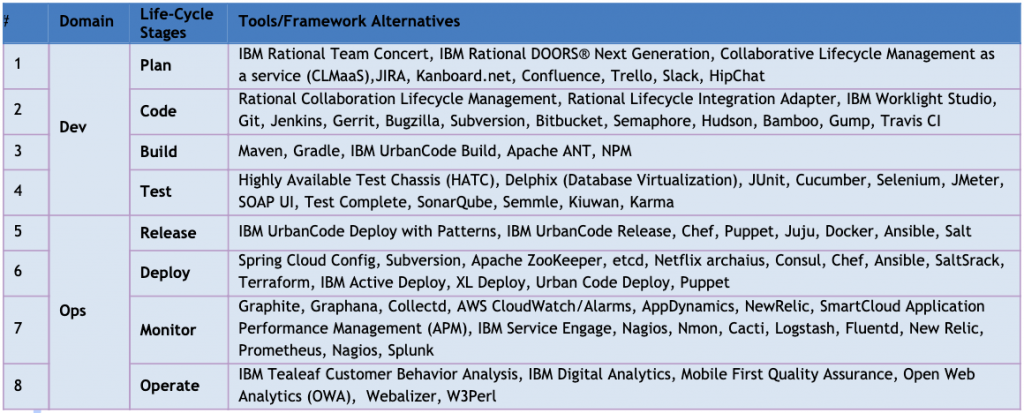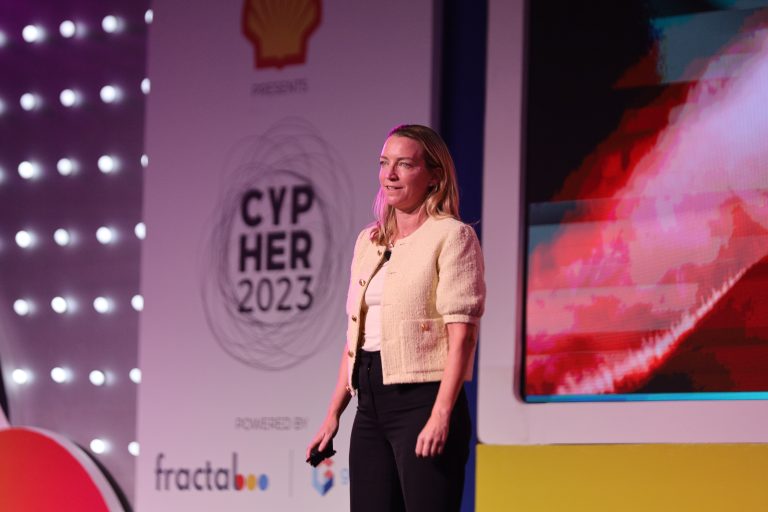DevOps is a culture where collaboration between development, operations, and business teams is considered a critical aspect of the DevOps journey. It’s not solely about the tools and DevOps in an organization creates continuous value for customers. Tools are only one of the pillars, the other being People and Processes.
DevOps increases organizations’ capability to deliver high-quality solutions at a swift pace. It automates all processes starting from build to deployment of an application or a product. This paper will provide a comprehensive understanding to apply DevOps methods, tools, and frameworks in their Organization’s DevOps journey.
Here are the challenges faced by Development & Operations – DevOps Teams:
Challenges for Development Team:
Developers are enthusiastic and willing to adapt to new approaches and technologies to solve organizations’ challenges. However, they do face several challenges including below:
- The competitive market place creates a lot of pressure of on-time delivery
- They have to also cater to production-ready code management and new capability implementation
- The release cycle is long, and hence the development team has to make several assumptions before application deployment. In such a scenario, it takes more time to resolve the issues that occurred during deployment in the production or staging environment
Challenges for Operations Team
The operations team is always sensitive about changing any resources or leveraging any new technologies or new approaches as they look for stability. However, they do face several challenges including below:
- Resource contention: It’s very difficult to handle increasing demands for resources
- Redesigning or tweaking: This is required for application execution in a production environment
- Diagnosing and Resolutions: They are supposed to diagnose and resolve production related issues after application deployment in isolation
DevOps Overview
Instead of releasing a large number of application features, companies are trying to see if a small number of features can be rolled-out to their customers through a series of release iterations. This has several advantages like better quality of software, quick feedback from customers, etc. which in turn ensures high customer satisfaction. To achieve these objectives, companies are required to:
- The lower failure rate for new releases
- Increase deployment frequency
- Quicker mean time to recovery in the event of a new release crashing the application
- Shortened lead time between fixes
DevOps fulfils all these objectives and helps in achieving seamless delivery. Organizations like Google, Etsy, and Amazon have adopted DevOps to achieve levels of performance that were unthinkable even a few years ago. They are doing tens, hundreds, or even thousands of deployments per day while delivering world-class reliability, stability, and security.
DevOps is a process framework that ensures collaboration between Development and Operations Team to deploy code to production environment faster in a repeatable and automated way. The word DevOps is an amalgamation of two words development and operations. DevOps helps to increases the speed to deliver applications and services faster. It allows organizations to serve their customers efficiently and become more competitive in the market. In simple terms, DevOps can be defined as an alignment between development and IT operations with better communication and collaboration.
- Earlier to DevOps, the development and operation team worked in total isolation.
- Testing and Deployment were isolated phases and were done after design and build. Hence they required more time than actual build cycles.
- Without DevOps, team members are spending a large amount of their time in testing, deploying, and designing instead of focusing on the core part that is creating business services.
- Manual code deployment will lead to errors in production
- Development & Operation teams have a separate-timelines and are not in synch, causing additional delays.

DevOps Vs. Agile Vs. Traditional IT
Agile is a set of principles, values, and methods for producing software. E.g., if one has any ideas and wants to convert those ideas into software, one can leverage the Agile principles and values. But, that software might only be working in the development or test environment. One should have a way to quickly and repeatedly transfer the software into a production environment in a simple and safe way.
To achieve this one needs DevOps tools and techniques. Agile software development methodology focuses on the development processes, but DevOps, on the other hand, is responsible for development as well as deployment processes in the safest and most reliable way.
Compare the traditional software waterfall model with DevOps to understand the benefits DevOps provides. We assume the application is scheduled to go live in 4 weeks, and coding is 85% complete. We assume the application is a new launch and the process of procuring the servers to ship the code has just been initiated.
| Traditional Process | DevOps Processes |
| After placing an order for new servers, the Development team works on testing. The Operations team works on extensive paperwork as required in enterprises to deploy the infrastructure. | After placing an order for new servers Development and Operations team work together on the process/paperwork to set-up the new servers. This results in better visibility of the infrastructure requirements. |
| Details about failover, redundancy, data centre locations, and storage requirements are skewed as no inputs are available from the development team who have deep knowledge of the application. | Details about failover, redundancy, disaster recovery, data centre locations, and storage requirements are pretty accurate due to the inputs from the development team. |
| The operations team has no idea of the progress of the Development team. The operations team develop a monitoring plan as per their understanding. | In DevOps, the Operations team is completely aware of the progress the development team is making. The operations team interact with the development team and jointly develop a monitoring plan that caters to the IT and business needs. They also leverage Application Performance Monitoring (APM) Tools |
| Before go-live, the load test crashes the application. Due to which the release is delayed. | Before the go-live, the load test makes the application slow. The development team swiftly fixes the bottlenecks, and hence application is released on time. |
DevOps Life-Cycle
Continuous Planning:
Continuous planning leverages lean principles to start smaller by identifying the resources and outcomes needed to test the business value or vision, adapt continually, measure progress and learn from customer’s needs and accordingly shift the direction with agility and update the business plan.
Collaborative Development:
The collaborative development process enables collaboration between business, development, and test teams that are spread across different time zones to deliver quality software continuously. This includes multiplatform development, support for polyglot programming, creation of user stories elaboration of ideas and lifecycle management. Collaborative development includes the process and practice of continuous integration, which promotes frequent code integrations and automatic builds. By integrating the application code frequently, integration issues are identified earlier on in the life cycle stage when they are easier to fix, and the overall integration effort is reduced via continuous feedback as the project shows continuous and demonstrable progress.
Continuous Testing:
Continuous testing reduces the testing cost while assisting the development teams to balance speed and quality. This also eliminates testing bottlenecks through virtualized services, and it also simplifies the creation of virtualized test environments that can be easily shared, deployed and updated as systems change. These capabilities reduce the cost of provisioning and maintaining test environments and shorten test cycle times by allowing integration testing early on in the life cycle.
Continuous Release and Deploy:
This adoption path consists of one major practice: Continuous release and deployment: Continuous release and deployment provides a continuous delivery pipeline that automates key processes. It reduces the number of manual processes, resource wait-time, and rework by enabling a push-button deployment that ensures a higher number of releases, reduced errors, and end-to-end transparency.
Automation plays a key role in ensuring the software is released repeatably and reliably. One critical objective is to take manual processes like build, regression, deployment and infrastructure provisioning, and automate them. In order to achieve this, one needs version control for source code, test and deployment scripts, infrastructure and application configuration data, and the libraries and packages application depend on. One should also be able to query the state of all the environments.
Continuous Monitoring:
Continuous monitoring ensures enterprise-grade reporting capability that helps development teams to understand the availability and performance of the applications in the production landscape, even before it is deployed to production. This early feedback provided by continuous monitoring is critical for lowering the cost of errors, and for steering projects in the right direction.
Continuous Feedback and Optimization:
Continuous feedback and optimization provide visual evidence for analyzing customer journeys and pinpointing the pain area. Feedback can be enabled for both pre- and post-production phases to maximize the value and ensure that even more transactions are successfully completed. This provides for immediate visibility into the root cause of customer struggles that affect their behaviour and impact business.

Benefits of DevOps
DevOps facilitates Development Teams to implement Continuous Integration and Continuous Delivery. This enables them to launch solutions/products faster to the market.
Important benefits of DevOps are:
- Predictability: DevOps offers a significantly lower failure rate for new releases
- Maintainability: Effort-less recovery process in the event of a new release crashing or disabling the current application.
- Reproducibility: Versioning the builds or the code so that an earlier version can be restored as needed.
- Greater Quality: DevOps enables the team to create an improved quality of application development as it incorporates infrastructure issues.
- Time to market: DevOps reduces the time to market through streamlined software delivery (by 50%).
- Reduced Risk: DevOps incorporates security attributes in the software lifecycle and assists in the reduction of defects across the lifecycle.
- Cost Efficiency: DevOps also offers cost-efficiency in software development, which is an aspiration of senior management.
- Resiliency: The software system is more stable, secure, and changes are auditable.
- Breaks larger codebase into manageable pieces: DevOps is based on the agile programming method. Therefore, it allows for breaking down larger code-bases into smaller and manageable chunks.
DevOps – Approach
DevOps adoption has produced several principles that have evolved over time and are still evolving. Most solution providers have developed their own variants. All these principles take a holistic approach to DevOps, and organizations of all sizes can adopt them.
Develop and test against a production-like environment
The objective is to allow the development and quality assurance (QA) teams to develop and test against systems that behave like the production so that they can see how the application behaves and performs well before it is ready for deployment.
The application exposure to the production-like system should be as early in the life cycle as possible to address two major potential issues. Firstly, it permits the application to be tested in an environment that is close to the actual production environment. Secondly, it enables the application delivery processes to be tested and validated upfront. It enables the operations team to verify early in the cycle of how their environment will behave when applications are deployed, thereby allowing them to create a finely-tweaked, application-aware environment.
Deploying with repeatable, reliable processes
This principle allows the development team and operations team to support an agile software development process throughout the lifecycle. Automation is critical to creating processes that are iterative, reliable and repeatable. Hence the organization must create a delivery pipeline that enables continuous, automated deployment and testing. Frequent deployments also allow teams to test the deployment processes, thereby lowering the risk of deployment failures during actual releases.
Monitor and validate operational quality
Organizations are good at monitoring applications in production because they have tools that capture metrics/KPIs in real-time. This principle moves to monitor early-in in the life cycle by ensuring that automated testing is done early so as to monitor the functional and nonfunctional attributes of the application. Whenever an application is tested and deployed, quality metrics should be captured and analyzed. Monitoring tools provide early warning about operational and quality issues in the landscape that may occur in production. These metrics should be gathered in a format that all business stakeholders can understand and articulate
Amplify feedback loops
An objective of DevOps processes is to enable organizations to react and make changes more rapidly. In software delivery, this goal requires an organization to get early feedback and then learn rapidly from every action it takes. This principle calls for organizations to create communication channels that allow the stakeholders to access and act on feedback. Development may act by adjusting its project plans or priorities. Production may act by enhancing production environments.
DevOps Tools: Cheat-Sheet

This article is a part of the AIM Writers Programme. If you wish to write for us, email us at info@analyticsindiamag.com



















































































